Last August, after leaving New Brunswick, my husband and I followed the south side of the route 138 loop along la baie des Chaleurs until we reached Percé, Québec. While the countryside is undeniably beautiful, it is not as spectacular as the rugged north shore.

We stayed at the same hotel as last year, Les Trois Soeurs, but on the second floor, so our view of the famous rock was even better. The delicate pastel shades of the sunset were just lovely.
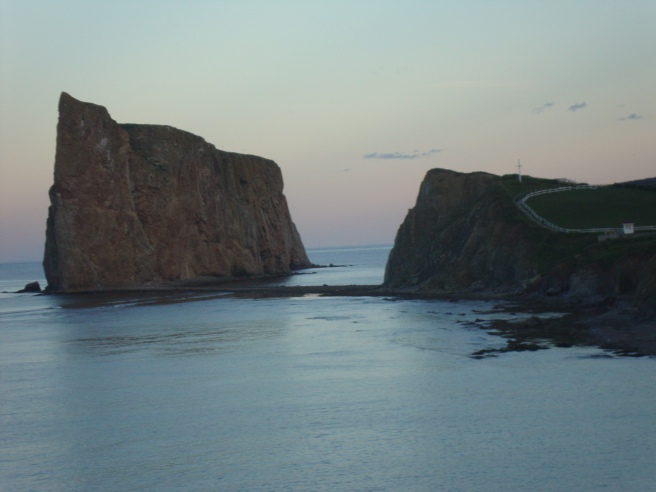
Unfortunately, our friends were not able to join us, so we spent more time wandering around Percé. One thing I hadn’t noticed before was the plaque on a rock in front of a large yellow house across the road.
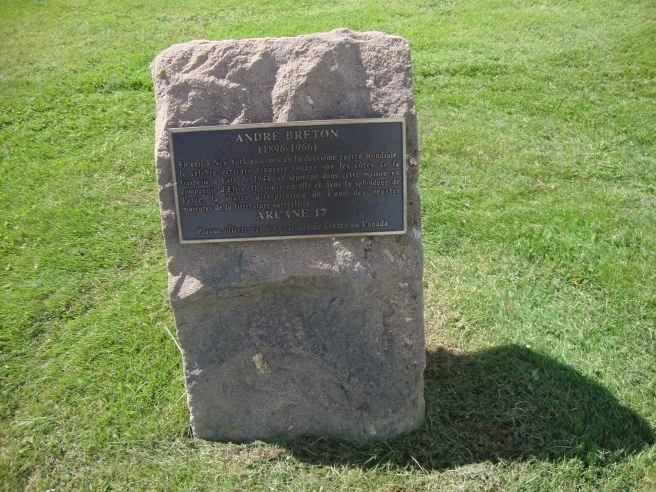
During WWII, the French poet André Breton spent the summer of 1944 in this house with his female companion, Elisa.
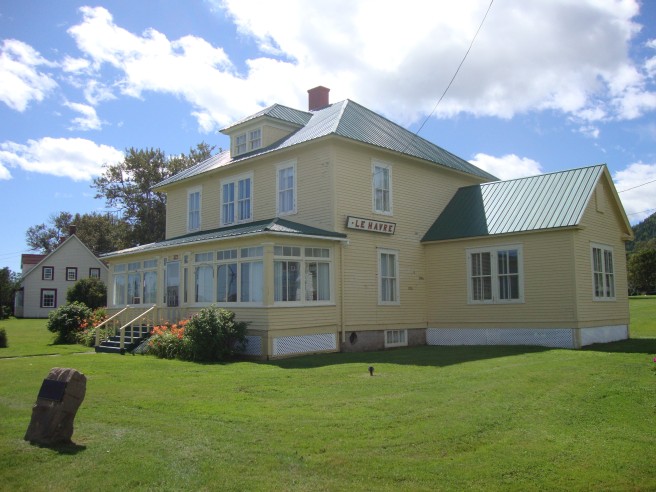
It was here that Breton was inspired to write one of his surrealist masterpieces, Arcane 17.

Goodreads describes the book as follows:
Using the huge Percé Rock—its impermanence, its slow-motion crumbling, its singular beauty—as his central metaphor, Breton considers issues of love and loss, aggression and war, pacifism, feminism and the occult, in a book that is part prose and part poetry, part reality and part dream.
Breton was not the only artist inspired by the Gaspé peninsula. Earlier, in the summer of 1932, Georgia O’Keefe drove there and painted several barns that prefigured her later work in New Mexico.
 White Canadian Barn II
White Canadian Barn II
I also came across an exhibit about a prominent group of radical Québec artists and musicians, including the Quebec superstar Robert Charlebois, who gathered in Percé in the late 1960s at a bar known as La Maison du Pêcheur.
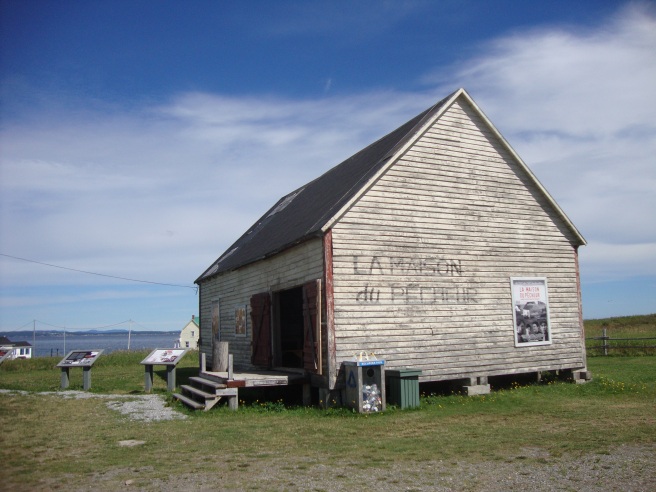
By 1969, Percé had become a Quebecois hippy haven. Ironically, the original house is now a prosperous restaurant; pictured above is a reconstruction for a 2013 film of the same name.
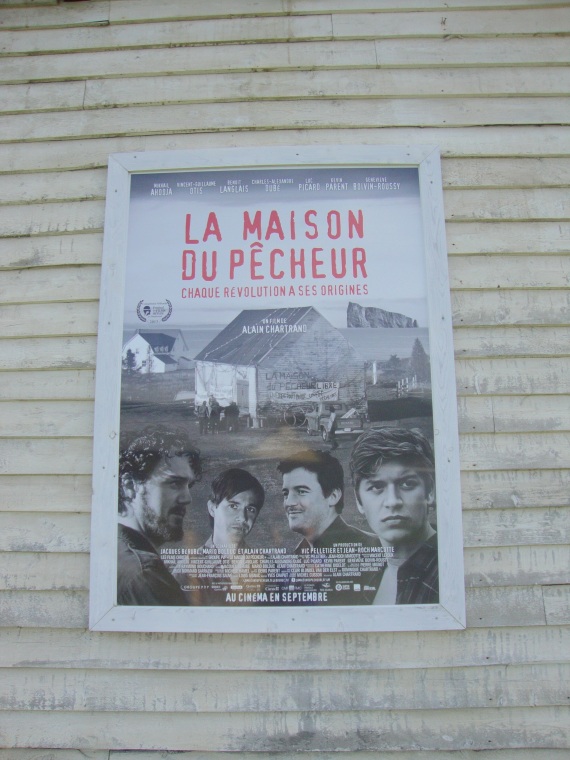
This was not the Quiet Revolution of the early 60s, which modernized Québec and made it a secular society.
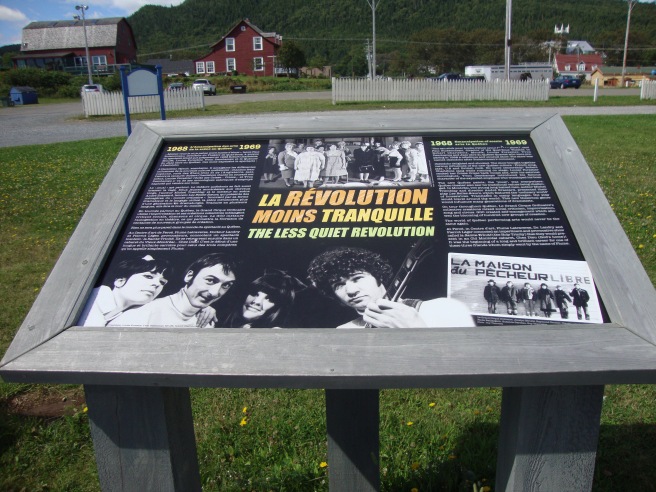
Perhaps the surrealist poet Breton best captured the essence of Gaspé. The forces of change are being felt once again, but in the form of climate change. In the fall of 2015, two violent storms hit Percé and caused considerable damage, destroying part of the boardwalk and beach. La Ville de Percé built a new green walkway and decided to leave the damaged section for tourists to view as part of an exhibit on climate change and the coastal environment.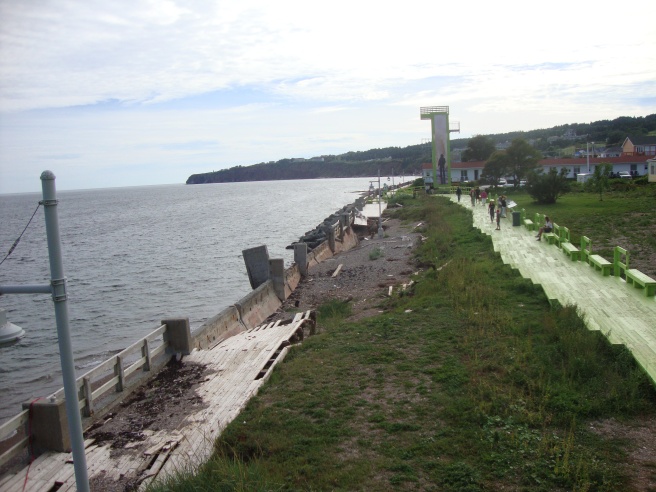
The Québec government acknowledges that climate change is being caused by greenhouse gas emissions produced by human activities.
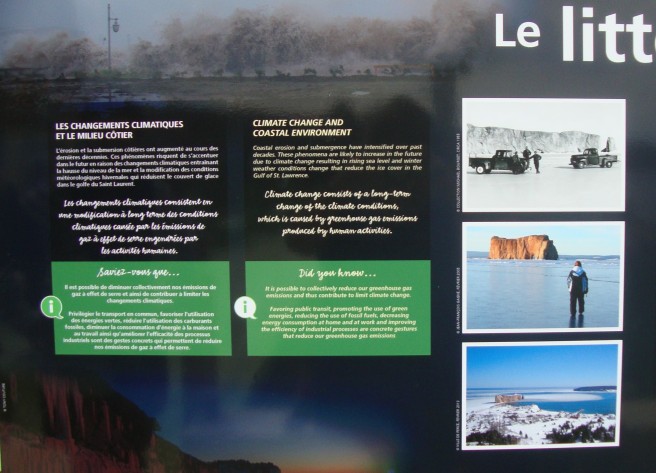

Elaine, Thanks for this. I didn’t know Breton had a Nova Scotia connection and had never heard of Charlesbois. I am glad that the gov’t is using the storms to educate about climate change: that sounds like a wise course. It must be pleasant to think back on your vacation as cold weather comes.
LikeLike
Thanks for your comment, Diane. It is starting to get cold and I found myself wondering where the summer went. There are still some colours left; the yellows are especially beautiful in the sunshine, but set against the clear blue sky, I was reminded of winter.
Breton left France during the war and stayed in Percé, Québec, which is a Francophone community. It must be a great place to write as Gabrielle Roy also stayed in the house just beyond the yellow one. She is best known for Bonheur d’occasion (The Tin Flute), which is set in the Montréal slum of St. Henri during WWII. A more literal translation of the title would be “second-hand happiness.”
LikeLike